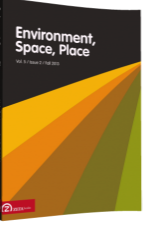The Hidden Spatiality of Literary Historiography: Placing Tulsi Das in the Hindi Literary Landscape
The Hidden Spatiality of Literary Historiography: Placing Tulsi Das in the Hindi Literary Landscape
Author(s): Ira SarmaSubject(s): Philosophy
Published by: Zeta Books
Keywords: the conceptualisation of space; Hindi literature; Tulsi Das;
Summary/Abstract: Literary histories are narratives, just like the literatures they describe. They construct not only a temporal framework but also a spatial arena for literary events, movements and authors—frequently following extra-literary agendas. Using the example of Hindi, the official language of the Republic of India, the article analyzes the conceptualisation of space within literary history by comparatively mapping the space of a sixteenth-century Hindi poet, Tulsi Das, as presented in three histories of Hindi literature (by two Western and one Indian historiographer) from the periods of high colonialism, the struggle for independence and the post-colonial era. The highly divergent spaces that emerge show that space can never be an objective ‘given’ and also testify to the significance of visualising verbally produced spaces cartographically, so that underlying socio-political dimensions can be perceived.
Journal: Environment, Space, Place
- Issue Year: 2013
- Issue No: Vol.5/2
- Page Range: 35-64
- Page Count: 30
- Language: English
- Content File-PDF

